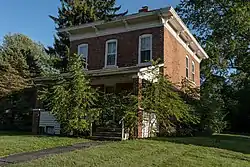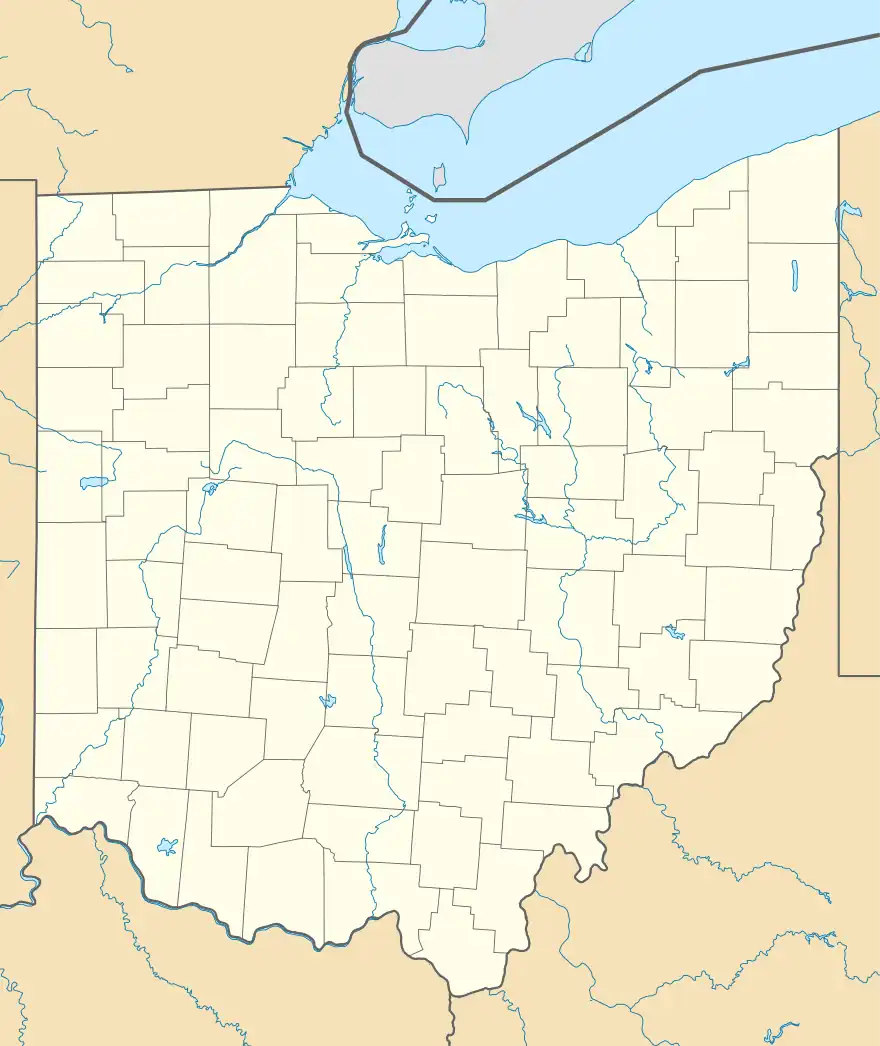Wilson Bruce Evans House
Wilson Bruce Evans House is a historic house at 33 East Vine Street in Oberlin, Ohio, United States. Completed in 1856, it served a major stop on the Underground Railroad, with its builders, Wilson Bruce Evans and Henry Evans, participating the 1858 Oberlin-Wellington Rescue, a celebrated rescue of a slave. It was declared a National Historic Landmark in 1997.[2][3]
Wilson Bruce Evans House | |
 | |
  | |
| Location | 33 E. Vine St., Oberlin, Ohio |
|---|---|
| Coordinates | 41°17′19″N 82°12′59″W |
| Area | less than one acre |
| Built | 1856 |
| Architectural style | Italianate |
| NRHP reference No. | 80003143 |
| Significant dates | |
| Added to NRHP | April 16, 1980[1] |
| Designated NHL | December 9, 1997[2] |
Description
The Wilson Bruce Evans House is located south of downtown Oberlin, on the south side of East Vine Street opposite Martin Luther King Jr. Park, a small public park behind Oberlin City Hall. The house is a two-story brick structure, covered by a hip roof. The roof has extended eaves studded with decorative brackets. A single-story porch extends across the front, its shed roof supported by square brick piers. The interior is finished with high-quality woodwork, milled and shaped by Wilson Bruce Evans and Henry Evans. The house was built 1854-56 by the Evans brothers, two free African-Americans, and was occupied by Wilson Bruce Evans and his family. At the time of its landmark designation in 1997, it was still in the hands of their descendants.[3]
History
The Evans house was the home of Wilson Bruce Evans, a prominent African-American abolitionist and early benefactor of Oberlin College, the first college to admit students of color. Evans rose to national attention after his importance in the 1858 Oberlin-Wellington Rescue, one of the events that challenged the controversial Fugitive Slave Act of 1850.[4] Although Evans was not an outspoken abolitionist like his colleagues Sojourner Truth and Frederick Douglass, Evans was cited as a man who "put justice above his own safety." The house was a frequent stop for travelers on the Underground Railroad such as Harriet Tubman.[5]
References
- "National Register Information System". National Register of Historic Places. National Park Service. January 23, 2007.
- "Wilson Bruce Evans House". National Historic Landmark summary listing. National Park Service. Retrieved April 29, 2008.
- "National Register of Historic Places Inventory-Nomination: Wilson Bruce Evans House" (pdf). National Park Service.
{{cite journal}}: Cite journal requires|journal=(help) and Accompanying seven photos, exterior and interior, from 1996 (32 KB) - "Wilson Bruce Evans House". NPS. Retrieved April 8, 2013.
- "Evans House". National Park Service. Retrieved April 8, 2013.